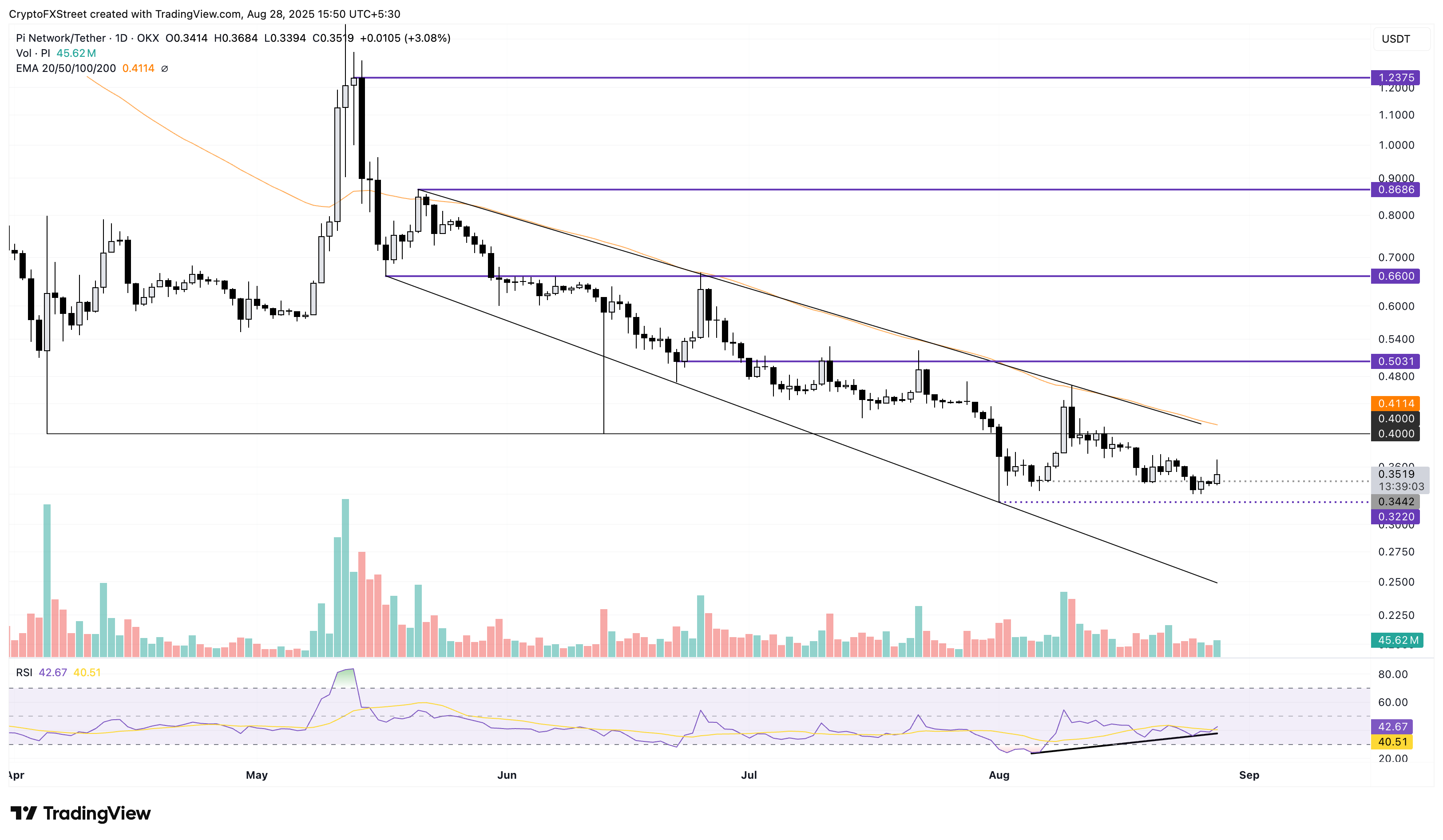Pi Network Price Forecast: Pi rebounds as core team drops Linux version
- Pi Network rises over 3% on the day, extending an upcycle within a falling channel pattern.
- The Pi core team has released the Linux version of the Pi Node.
- The Stellar protocol 23 upgrade will enable smart contract support on Pi Network.
Pi Network (PI) ticks higher by 3% at press time on Thursday, fueled by the release of Pi Node’s Linux version and the announcement of smart contract functionality with Stellar’s upcoming protocol 23 upgrade. The technical outlook holds a bullish bias as PI rebounds from a crucial support band for a renewed upcycle within a falling channel pattern, with bulls eyeing a potential breakout.
Pi core team drops Linux upgrade ahead of smart contracts bundled with protocol 23 release
Pi Node, a desktop software that serves as a single-entity node in the Pi Network, has expanded its support to include Linux, in addition to Windows and macOS. This release to a new operating system (OS) will receive two testnet rollouts, followed by the mainnet release in the upcoming weeks.
The core team has expressed concerns about potential network outages during the upcoming rollouts, which will be announced in advance.
Similar to other OS versions, this release will receive embedded Know Your Customer (KYC) authority with the upcoming upgrades, ensuring the Pi Network remains a KYC-verified blockchain. With the Pi Node stepping into the Linux ecosystem, the network is inching closer to mainnet activation, which will enable pioneers to deposit verified PI balances and fully kickstart the Pi ecosystem.
To boost the Pi ecosystem with smart contract functionality, the Pi Network will utilize the upcoming Stellar protocol version 23. On the Stellar Mainnet, voting will be conducted on September 3, as previously reported by FXStreet.

It is worth mentioning that Onramp Money has hinted at a potential Pi Network integration on September 1. The hints mention “3.14159,” which are the initial six digits of Pi. In parallel to the Linux drop, the hint from Onramp Money fuels the anticipation of Mainnet activation.

Pi Network eyes extended recovery to the 50-day EMA
Pi Network trades at $0.3519, appreciating over 3% on the day as it bounces off from above the $0.3220 low from August 1. The intraday recovery signals a potential upcycle within a larger falling channel pattern formed on the daily chart.
The recovery run could target the upper ceiling of the chart pattern, moving alongside the 50-day Exponential Moving Average (EMA) at $0.4120, as the Relative Strength Index (RSI) reads 47 on the same chart, pointing towards the halfway line as buying pressure rejuvenates.
Furthermore, the uptrend in RSI marks a bullish divergence with the PI token price action.

PI/USDT daily price chart.
Looking down, if PI loses the ground covered by the intraday recovery, it could test the all-time low of $0.3220, reached on August 1. In such a case, a potential spike in supply pressure could trigger a flash of the $0.3000 psychological support on the bearish radar.
Bitcoin, altcoins, stablecoins FAQs
Bitcoin is the largest cryptocurrency by market capitalization, a virtual currency designed to serve as money. This form of payment cannot be controlled by any one person, group, or entity, which eliminates the need for third-party participation during financial transactions.
Altcoins are any cryptocurrency apart from Bitcoin, but some also regard Ethereum as a non-altcoin because it is from these two cryptocurrencies that forking happens. If this is true, then Litecoin is the first altcoin, forked from the Bitcoin protocol and, therefore, an “improved” version of it.
Stablecoins are cryptocurrencies designed to have a stable price, with their value backed by a reserve of the asset it represents. To achieve this, the value of any one stablecoin is pegged to a commodity or financial instrument, such as the US Dollar (USD), with its supply regulated by an algorithm or demand. The main goal of stablecoins is to provide an on/off-ramp for investors willing to trade and invest in cryptocurrencies. Stablecoins also allow investors to store value since cryptocurrencies, in general, are subject to volatility.
Bitcoin dominance is the ratio of Bitcoin's market capitalization to the total market capitalization of all cryptocurrencies combined. It provides a clear picture of Bitcoin’s interest among investors. A high BTC dominance typically happens before and during a bull run, in which investors resort to investing in relatively stable and high market capitalization cryptocurrency like Bitcoin. A drop in BTC dominance usually means that investors are moving their capital and/or profits to altcoins in a quest for higher returns, which usually triggers an explosion of altcoin rallies.



